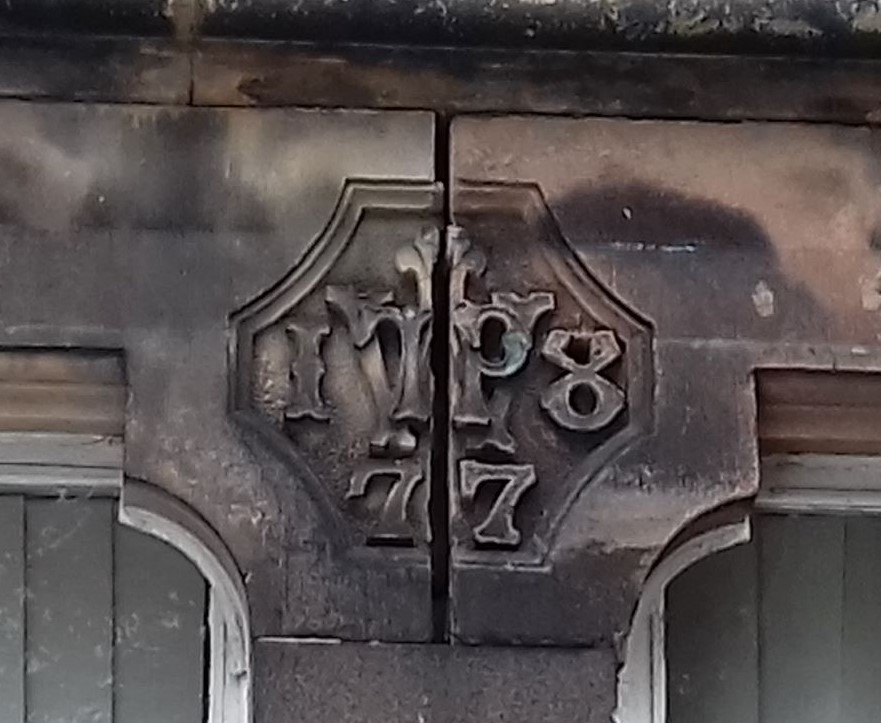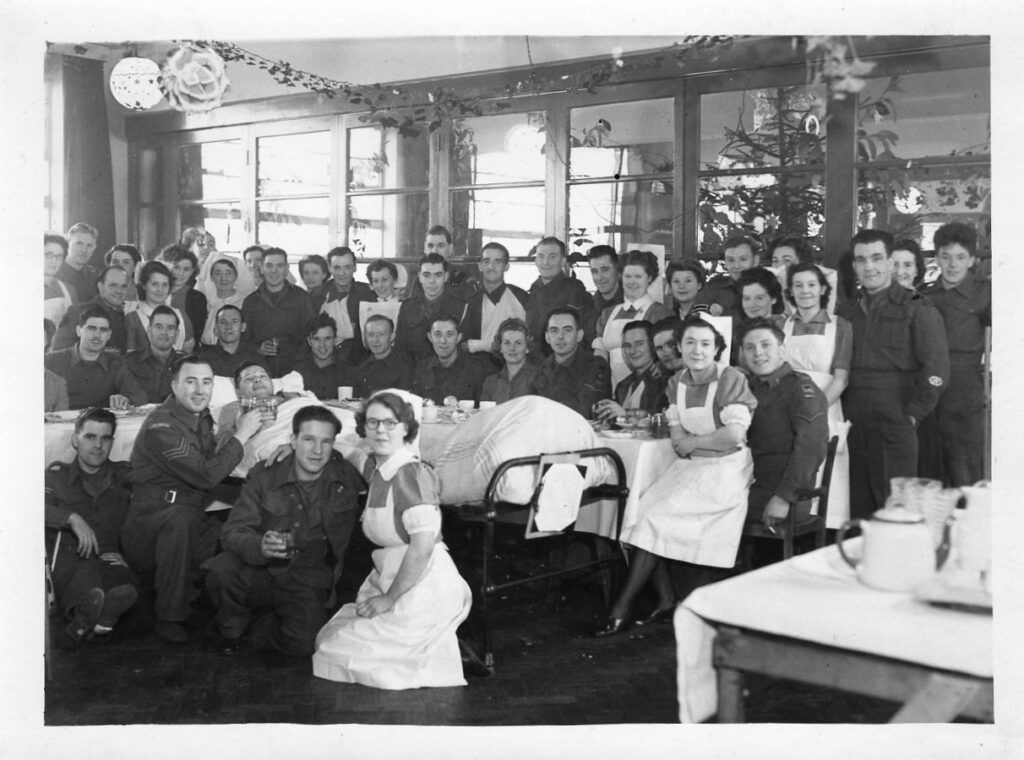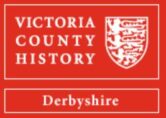A pioneer school for ‘delicate children’, home to Chesterfield’s richest woman, built by Chesterfield entrepreneur TP Wood, hospital annexe and now a school and home to model railways. Brambling House at Hady, just within the old parish of Hasland, certainly has an interesting history which we explore in this blog.

Our spin-off book on Hasland will give a concise account on Brambling House, which is situated towards the top of Hady Hill, Chesterfield. (Historically it was just inside the large parish of Hasland). But our account will be fairly concise, as with all such VCH accounts. But you’ll find it has been meticulously researched. This means anyone who wants to add to the story can do so, aided by the full footnotes. Here we’ll trace Brambling House, with the aid of text in our Hasland book, but with a little more added history and photographs and minus the footnotes.
Brambling House is built

The house was built in 1877 on a previously unoccupied site at the top of Hady Hill, for Thomas Philpot Wood (1840–1911). He was a Chesterfield wine and spirit merchant, a business which he inherited from his father, also Thomas Philpot Wood, of Boythorpe House. The younger T.P. Wood was the grandson of Capt. John Wood RN of Brambling House in Ickham (Kent), from which the house in Chesterfield took its name. Wood added an aerated water manufactory to his father’s business.
Wood also became chairman of William Stones Ltd, the Sheffield brewers, and a director of J. & G. Wells Ltd, the Eckington colliery owners. He was educated at Chesterfield grammar school (whose governing body he later chaired) and at Düsseldorf. Wood became a town councillor in 1863, an alderman in 1871 and was mayor on three occasions. He supported numerous local charities. In his public life he was best remembered as the driving force behind the creation of Queen’s Park, but also pressed for other local improvements. Perhaps more famously in the Chesterfield area, between 1864 and 1905 he published a yearly Chesterfield and North Derbyshire Almanack, whose varied content reflected Wood’s interest in local history. Wood was a keen gardener and in his younger days an amateur actor.
Wood never married and lived alone at Brambling House, which had 17 principal rooms, apart from three or four servants. The house was built of brick with slate roofs, and stood in partly wooded grounds, which Wood greatly enhanced. He died in December 1911, leaving personal estate of £94,836.7
New owners of the house
Brambling House was sold (privately, it appears) soon after Wood’s death to George Albert Eastwood (1860–1934), also the head in the second generation of a successful local business and, like Wood, a former pupil of the grammar school, a prominent member of Chesterfield corporation, a generous benefactor to the town, and a bachelor. Eastwood was the son of Edward Eastwood (1826–1910), who in 1863 established a railwaywagon building and repair business, with works on Brimington Road (in Tapton). G.A. Eastwood was a town councillor, alderman and mayor (like Wood on three occasions), and was a trustee or committee-man of many local bodies. He was chairman of J. & G. Wells and a director of several other local colliery companies. Whereas his father was best remembered for his generous benefactions to the Royal Hospital, G.A. Eastwood’s two largest charitable acts were his purchase in 1912 of the Hasland House estate, whose grounds became Eastwood Park, in memory of his father, and in 1924 his gift of a site on Infirmary Road for the technical college, together with £25,000 towards the cost of the original building.
G.A. Eastwood remained at Brambling House until he died in November 1934, leaving (as his father had done) estate valued at half a million pounds. His main beneficiary was his niece Susie Blanche Eastwood, who had performed the opening ceremony at Eastwood Park in 1913 and kept house for her uncle. During this period Brambling House was frequently the venue for fund-raising events for the Congregational Church on Soresby Street, of which the Eastwoods were members, for local charities and for the Liberal Party. Miss Eastwood stayed at Brambling House for a short time after her uncle’s death.
From home to school, hospital and school
In 1936 Blanche Eastwood sold the Estate, including the house. The corporation agreed to purchase the property and convert it into a pioneer school for ‘delicate children’, which opened in 1939.

After she sold the estate in 1936, Blanche Eastwood bought a piece of land on the opposite side of Hady Hill, on which she built a new house, Brambling 17 Cottage. Miss Eastwood, who never married, remained active in public life, as a town councillor and JP for both the borough and county, and in church work, as well as continuing her family’s tradition of generous support for local charities. She died, aged 89, in 1963, leaving estate valued at £790,396.18 At that time she was reputed to be Chesterfield’s richest woman.
But the school had a short initial life. In 1941 the school was taken over by the Ministry of Health being administered as a convalescent facility by the Chesterfield Royal Hospital’s board of management. It was designed as additional accommodation for ‘war and blitz casualties’. The facility closed in 1945, at which time 5,143 patients had been dealt with, 1,815 being members of the forces. In early 1945 a rehabilitation and occupational therapy centre was established there both for in and outpatients. In September 1944 the Princess Royal (Princess Mary) visited, meeting 80 members of the forces, most of whom had been wounded in France. It was reported that only two of these were local men.



The Ministry of Health required the hospital’s board of management to surrender Brambling House to the county education committee, presumably so that school activities could be resumed. Surrendering the property led to the hospital management board purchasing Ashgate House and grounds (later Ashgate Hospice) for use as a rehabilitation centre.
What became Brambling House Special School was later renamed Frank Merifield school in memory of its founding headmaster.
Here great emphasis was placed on access to fresh air, sunlight and physical activities. In 1950 is was reported that upwards of 150 children might be pupils there from nine months to three years, though some might be pupils for longer. A childrens’ centre was also based at Brambling house, which was designed to help pupils having difficulty at school. The establishment closed in 1988 as the approach to special needs education changed.
Another school
In 1997 the buildings were acquired by a private primary school, St Peter & St Paul, which had previously occupied outbuildings at Penmore House, but had its origin in Old Brampton. This school is still based at Brambling House. In 1965 part of the grounds were let (and later sold) to the Chesterfield & District Model Engineering Society, which developed an extensive and very popular miniature railway at Brambling House.

This post was updated on 24 April 2022 to make it clear that Brambling House was in the former parish of Hasland and to add a link to an earlier blog on the boundary of Hasland parish.

My uncle, Jack Eyre Miles, was a teacher at Frank Merrifield and he wrote a series of books to help the development of the educationally sub normal. (I think that was the phrase from those times).
the beginning of the article is mixed up, you show Brambling house as Penmore house Hasland but then go on to give the correct address which is Hady.
Thanks for your comments. I have altered the post to reflect that Brambling House was actually just inside the former parish of Hasland. We have previously blogged about the Hasland boundary, which was once more extensive than it is now – see https://derbyshirevch.org/2022/03/hasland-and-its-boundary/. Our new book on Hasland, due out in June, will cover the area inside the former boundary.
My father was injured in the last war he suffered shrapnel wounds in North West Frace he recouped at Brambling House 1944 I have lived opposite the house since 1963
Thanks for sharing this with us. This part of Brambling House’s history seems to one one of those short episodes that are now almost forgotten about.
Thanks for sharing this with us. This part of Brambling House’s history seems to one one of those short episodes that are now almost forgotten about.